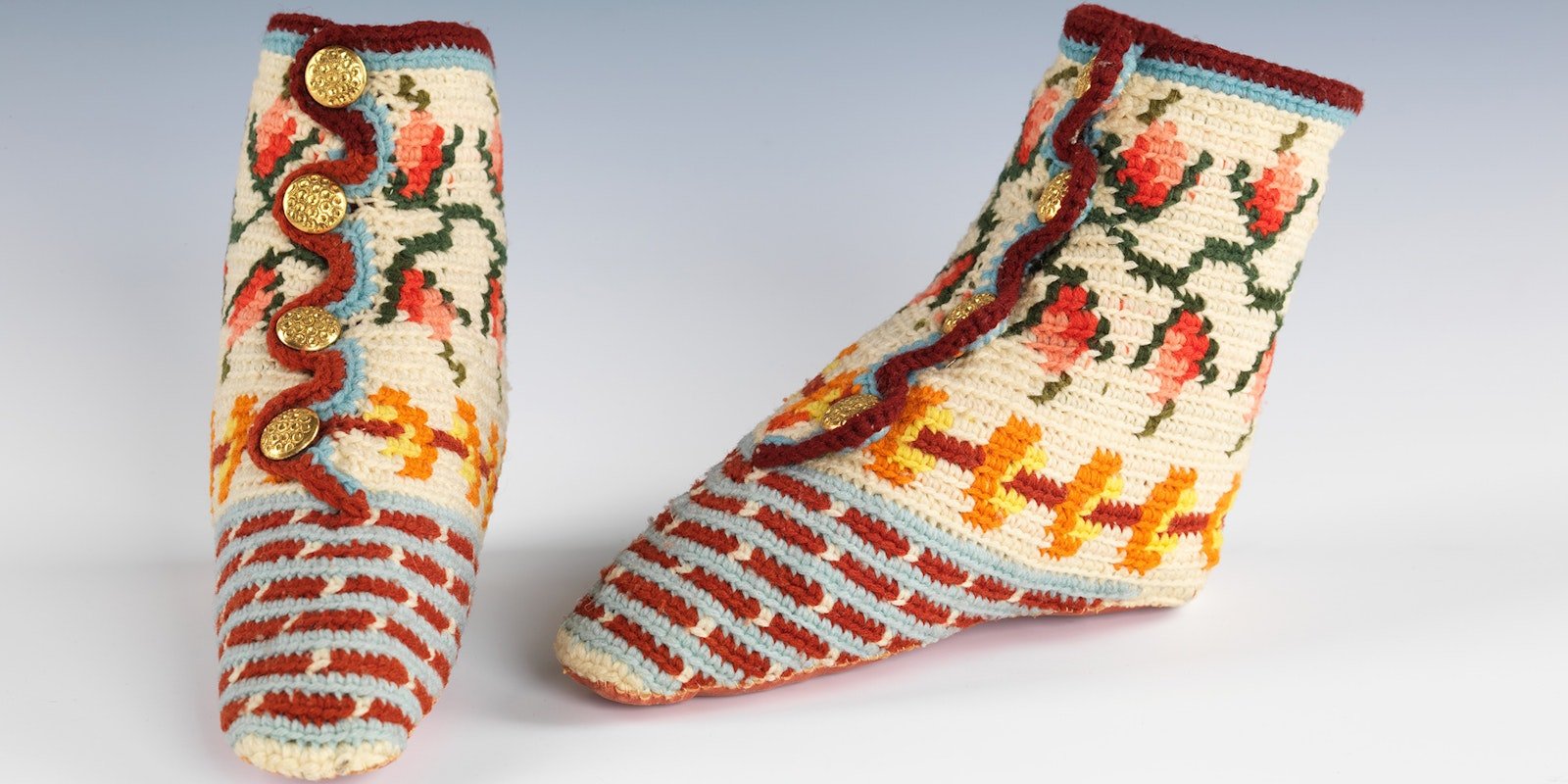Across cultures and throughout time, small items have always had the power to charm us. Our Winter 2024 issue is devoted to all things miniature—both projects and articles. There are so many needle arts that translate beautifully to tiny things including: petit point, minute quilting squares, tiny tatted edgings, micro-knitting, lockets with stitched inserts, buttons covered with embroidery, and teeny cross-stitch samplers.
 Book cover. after 1651. British. Silk and Metal Thread on canvas. Overall: 6 7/8 x 4 ½ in. (17.5 x 11.4 cm). Textiles-Embroidered. Rogers Fund, by exchange, 1929. Accession Number 29.23.8 Courtesy of the Metropolitan Museum of Art
Book cover. after 1651. British. Silk and Metal Thread on canvas. Overall: 6 7/8 x 4 ½ in. (17.5 x 11.4 cm). Textiles-Embroidered. Rogers Fund, by exchange, 1929. Accession Number 29.23.8 Courtesy of the Metropolitan Museum of Art
Some small objects were created for portability and practical purposes, some just because they were enchanting. Needlework tools and cases that are miniature are also fascinating. We look forward to seeing your ideas for stories about lilliputian necessities, such as pins with stories inscribed on their heads, antique tools covered with wee embellishments, or stitched sewing caskets covered with stumpwork figures.
PieceWork’s primary focus is on historical and traditional needlework. Please send us your submissions for the Winter 2024 issue for project ideas and articles about wee stitched things that were created for both useful and fanciful reasons: small pieces made from punch needle, embroidery, needlepoint, knitting, crocheting, tatting, temari, Hardanger, or any other technique that you can think of that will fit this theme.
 Filigree miniature comprising sewing machine form on rectangular table top with decoration in three panels, on scrolled supports. The working parts consist of a treadle, crank, slotted arm, and needle, mid-19th century, silver, H x W x D: 6.1 x 4.2 x 8 cm (2 3/8 x 1 5/8 x 3 1/8 in.) Courtesy of the Cooper Hewitt, Smithsonian Design Museum, Product Design and Decorative Arts Collection, Accession number 1938-6-1 From Wikimedia Commons
Filigree miniature comprising sewing machine form on rectangular table top with decoration in three panels, on scrolled supports. The working parts consist of a treadle, crank, slotted arm, and needle, mid-19th century, silver, H x W x D: 6.1 x 4.2 x 8 cm (2 3/8 x 1 5/8 x 3 1/8 in.) Courtesy of the Cooper Hewitt, Smithsonian Design Museum, Product Design and Decorative Arts Collection, Accession number 1938-6-1 From Wikimedia Commons
Share an interesting fiber tradition from any time frame or place. We can’t wait to see your ideas! We welcome submissions from everyone, from experienced stitchers and enthusiastic beginners to researchers passionate about the historical significance of textile techniques.
Submissions due: January 15, 2024
We are looking for:
- Feature articles—Tell us more about the history of needlework—stories, profiles, and biographies.
- Historical and historically inspired projects—instructions using bobbin lace, tatting, embroidery, knitting, crochet, or other needlework techniques, all made by hand.
- How-to articles—tell us how a historical needlework technique is done.
- Web content—if you have an idea for a shorter piece, about 300 to 500 words, please submit your proposal to us.
Have an idea that doesn’t fit our theme? Send that to us, too! We may be able to use it in an upcoming issue.
Forms and information:
Online Submissions Form PieceWork Winter 2024
PieceWork Contributor’s Guidelines
Questions? Contact us at [email protected].
Submissions due: January 15, 2024
We will notify you of our decision: February 2024
Articles and projects due: April 22, 2024
Do you want to be added to the PieceWork Call for Submissions email list? Sign up here.

